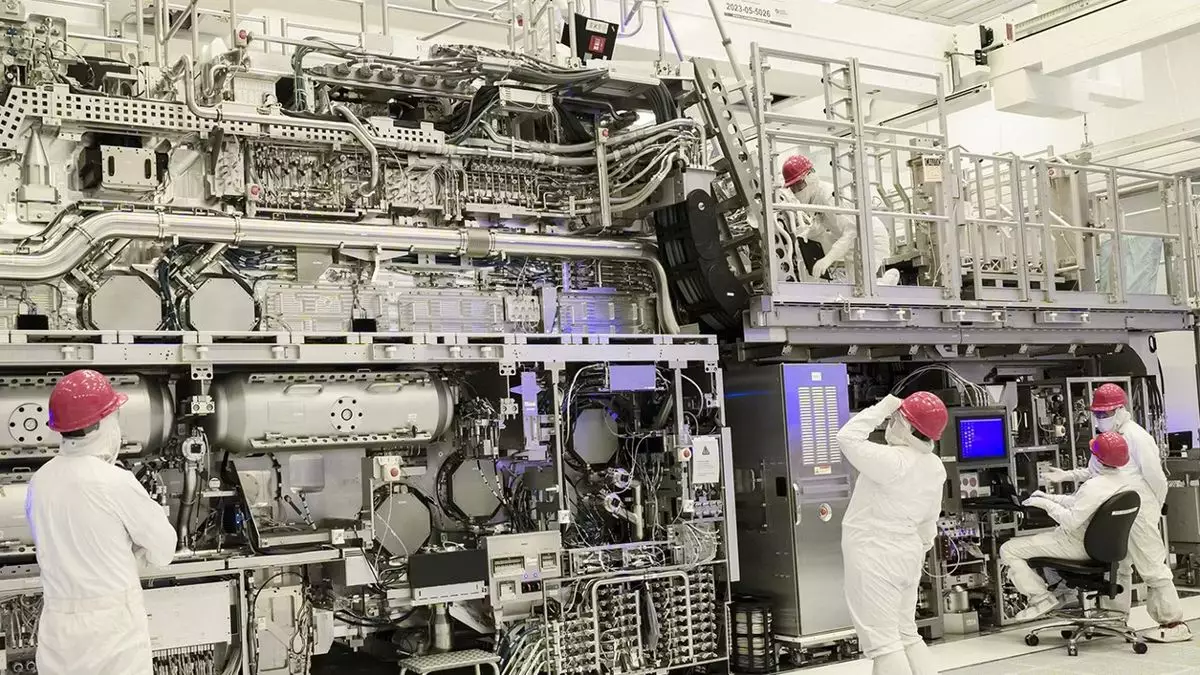The semiconductor industry is in a constant state of evolution, with advancements and setbacks defining the trajectory of major players. Intel’s recent announcement concerning its much-anticipated 18A chip production node has stirred significant discussions, leaving many to ponder what this truly means for the future of computing and the company’s standing within the industry. As the company promotes this development on its website with phrases like “Intel 18A is now ready,” skepticism abounds regarding the actual readiness and implications for consumers and the market at large.
The 18A node is a crucial milestone in Intel’s push to reinvigorate its semiconductor manufacturing capabilities, part of what the company dubs its “five nodes in four years” initiative. Following a turbulent period marked by technological delays and missteps, Intel aims to regain its competitive edge with this new fabrication node. It is crucial to note that while a new node generally signifies enhanced performance and efficiency, the validity of such claims is contingent upon effective implementation.
Intended for a range of products, including the upcoming Panther Lake laptop chip and the Nova Lake desktop CPU, both slated for release in 2026, the timeline raises important questions. Why is the company promoting 18A’s “readiness” before any concrete products are available to consumers? The website references commercial availability, stating, “tape outs beginning in the first half of 2025.” However, such statements can often appear more like marketing propaganda than genuine readiness.
It is apparent that Intel’s new web portal is not solely about celebrating its own chips. Instead, the emphasis seems to be on attracting potential customers for its burgeoning foundry business. The company is strategically positioning itself as a viable alternative to the dominant Taiwanese foundry, TSMC. While this ambition is commendable, it raises further concerns about Intel’s own product development capabilities. For instance, despite the announcement around 18A, production timelines for internal projects like the Clearwater Forest CPU have already been pushed back—a move indicative of possible internal difficulties.
The crux of the challenge lies in whether Intel can consistently deliver on the promises made within its ambitious roadmap. With 18A and the subsequent nodes, one might be inclined to see this as more of a PR maneuver than a genuine showcase of technological triumph.
A central component of the 18A node is its use of various advanced technologies designed to enhance chip performance and efficiency. The claims of achieving up to an impressive 15% better performance per watt and 30% improved chip density over the Intel 3 process node are certainly attractive. Moreover, the introduction of PowerVia, a backside power delivery technology, aims to revolutionize power management within chips.
Yet, skepticism remains. In a world dominated by aggressive competition and technological prowess, the semiconductor landscape continues to evolve. Compare Intel’s 18A claims to those of TSMC, which is often perceived as the gold standard in chip manufacturing. While Intel’s promises sound appealing on paper, there are significant concerns regarding practical performance and reliability.
Intel’s edge in SRAM density appears to be a mixed bag. Although the latest reports suggest 18A matches TSMC’s N2 node in this specification, the context of SRAM density and its overall significance in practical applications cannot be overstated. Chips that can handle rapid data processing are desirable, yet performance in real-world scenarios must be established through rigorous testing, something that cannot be rushed.
Optimistically, if Intel’s 18A node fulfills its ambitious targets, it could reinvigorate not only the company but also the broader market. A successful rollout would mean more competitive options for consumers and a much-needed check against rising chip prices. Intel’s historic significance within the semiconductor landscape certainly adds weight to stakeholders’ expectations. However, the quicker the company can provide clarity and tangible products based on 18A, the better positioned it will be against its competitors.
As Intel barrels toward implementing its new 18A node, a cautious optimism must prevail among industry observers and customers alike. Technology announcements should translate into practical benefits, and the capacity to deliver promised performance without the lingering distractions of past missteps is what will ultimately define Intel’s future. The company is at a critical juncture, and its ability to navigate this landscape could very well determine whether it can indeed turn the tide or fall into the backdrop of an increasingly competitive market.

